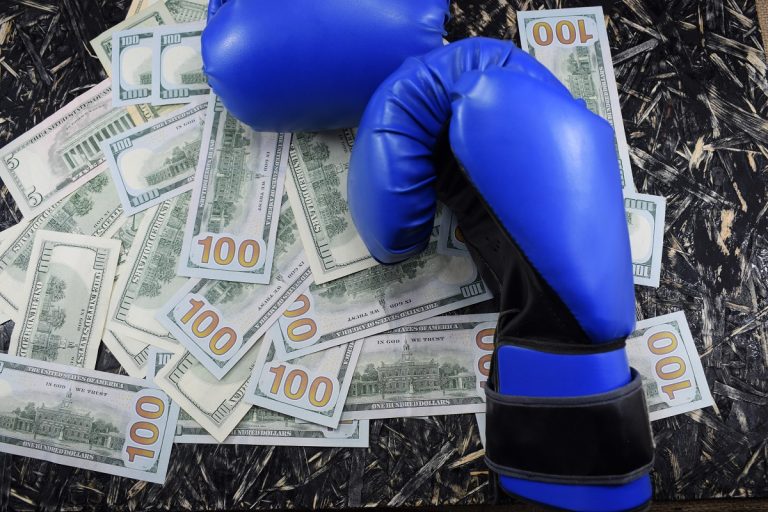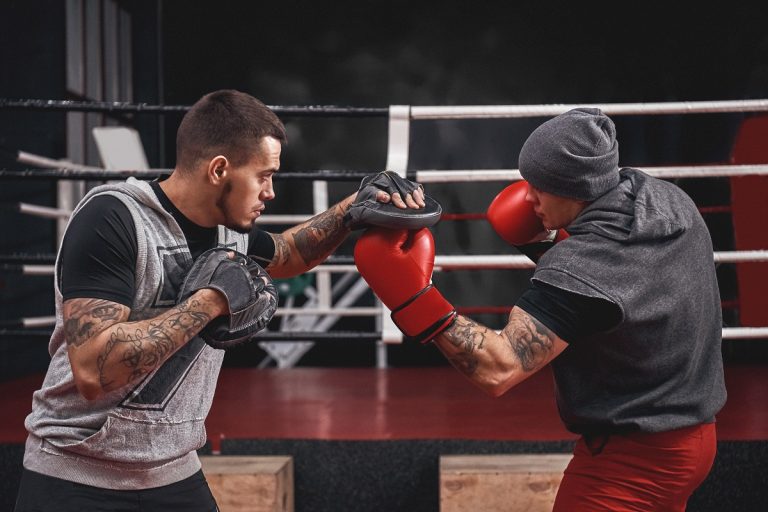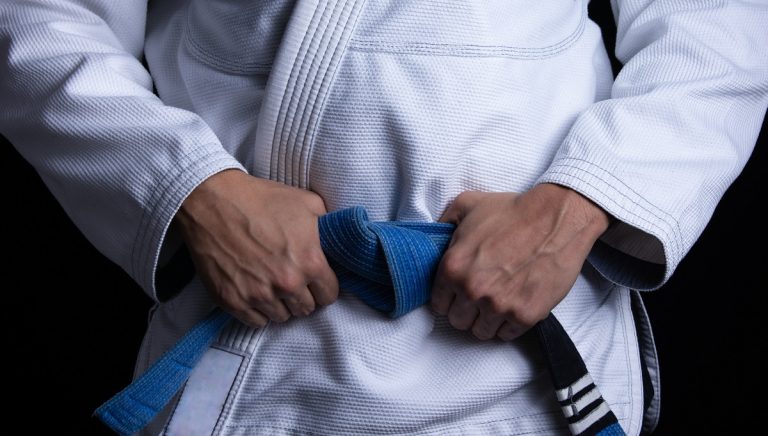What Is a Boxers’ Fracture? (Definition, Symptoms & Possible Treatment)
Those who take part in combat sports like boxing run the risk of suffering from injuries. Even pro athletes still get injuries despite sufficient practice. However, the reality is that boxing is still largely safer than other sports.
Since it’s still possible to get injured with boxing, it’s advisable to become familiar with the types of boxing injuries and also know how to treat them. The extent of a boxing injury can either be minor or somewhat serious. On the bright side, practicing the proper techniques and training can help you avoid many injuries that come with boxing.
A total of 27 bones exist on the wrist and the hand; these bones can break when they experience considerable stress. A boxer’s fracture is one of the common boxing injuries occurring predominantly in the hand and is our focus in this guide. But before we go into the details, let’s summarize what this injury entails.
Summary: Definition of a Boxer’s Fracture
A boxer’s fracture occurs due to a break in the metacarpal bone. The metacarpal bones of the hand run from the wrist to the fingertips. So, when a boxer punches an object with a certain amount of force, it’ll likely cause a boxer’s fracture.
The most common places to sustain this type of injury are usually around the phalanges and ulna. Sometimes, an injured person may also feel the effect on other fingers.
One of the obvious signs that an injury could be a fracture is if the boxer feels pain or swelling in the affected area. A fractured finger will also be quite difficult to flex. Additionally, bruising may be visible on the injured boxer’s hand.
Boxers’ fractures are prevalent but are also avoidable. Interestingly, about 20% of hand-fractured boxers have dealt with a boxer’s fracture at one point or another.
If you use a lot of force when punching, there’s a likely chance that your little finger and the bones between the ring finger will be at risk of injury. When this happens, it’s advised that you see a medical professional immediately.
Symptoms of a Boxer’s Fracture
Here are some of the likely indications that you have a boxer’s fracture:
- Swelling of the hands and a sharp pain
- A feeling of a tender spot on the hand
- Numbness and tremors in the fingers
- Discoloration or bruising on the skin
Does a Boxer’s Fracture Have Any Treatment?
Usually, before treatment is prescribed, a sports medicine expert will inquire about a patient’s medical history. They’ll also check for soreness, discoloration, deformity, or edema in the injured hand. In addition, the expert will look at any issues in mobility and check for tender sensations as well as any other changes in the fingers.
However, an x-ray gives a more extensive diagnosis to enable treatment of the fracture. If it’s been diagnosed as a boxer’s fracture, medical professionals usually recommend a cast or splint to keep the finger in place for at least three to six weeks. Also, to stabilize the finger, the health professional may employ pins to keep the bone in its correct position if surgery is required.
If there’s swelling or a sign of discomfort at any time, apply an ice compress and elevate the affected area. An elevated hand can help reduce any swelling in the affected area.
Doctors will prescribe medication to help reduce pain or inflammation. If there’s a high risk of infection from a cut while the fracture is still healing, doctors will commonly prescribe antibiotics.
The athlete may need to visit an occupational therapist who’ll recommend therapy as part of your recovery. The therapist will provide the boxer or athlete with motion and strength-building exercise routines to expedite recovery. Surgery may be necessary if the bones don’t heal fully after all other treatments have been exhausted.
It’d take about 6–10 weeks for a full recovery. However, this varies depending on age, fitness, and other factors.
The boxer can get back in the game only after regaining finger mobility, and an x-ray indicates a healed fracture. Still, with the proper care and attention, most patients can expect a full recovery within a couple of weeks.
How to Avoid a Boxer’s Fracture
Regardless of how little, no boxer wants to acquire an injury — much more, one in the hand that may stunt practice and eliminate one from competitions. To circumvent these, it’s important to familiarize oneself with essential tips on preventing a boxer’s fracture, as outlined below.
Ensure Your Hands Are Properly Wrapped
Take the time to wrap your hands before you start fighting or training. More importantly, you must learn to do it the right way. There are numerous instructional videos available online that show you the proper way to wrap your hands properly before boxing.
Ensure that your wrists and knuckles are always safe no matter what. Before wrapping, extend your hands and clench your fist so the wrap will hold its shape. Additionally, check to see that your fingers are tightly wrapped together to prevent sprains and other damage to the hands.
Learn the Proper Punching Techniques
As a boxer, your hands are the most valuable and the most susceptible instruments in your arsenal. When boxers throw their punches, their thumbs are frequently fractured or shattered. However, you can avoid wrist and finger injuries if you punch properly.
To ensure proper wrist alignment, make sure you spin your fist when you strike. Also, hit with your middle finger’s knuckle as your target.
Do Warm-Up Exercises
Boxers frequently suffer from muscle strains or some other injuries. As such, it’s essential to do some warm-ups like stretching daily.
Ensure that your muscles and ligaments can move more freely by practicing regular stretching exercises. This way, you can easily avoid boxing injuries, especially boxers’ fractures.
Try doing stretches that target specific muscles in the shoulders, hamstrings, and quadriceps. Summarily, before boxing, ensure you warm up properly, as instructed by your coach.
Learn a Good Defense Technique
Another way to prevent a boxer’s fracture or other boxing injuries is to learn good defenses against strikes. Although endurance and stamina are critical for your boxing training, they aren’t sufficient.
During training, you can learn to maintain rapid footwork and quick reactions when fighting to protect yourself from your opponent. Although it may be difficult to get around when you’re tired, relaxing your guard won’t be a good idea.
Adopt a Good Diet
Athletes need to eat healthily, which involves leaning towards a balanced diet. A good diet allows boxers to recover and maintain their bodies.
Vitamin D, calcium, and protein should be a regular part of your diet. With calcium, you’re assured of healthy and greatly improved bones. As a result, fractures are less likely to occur, and your bones will heal faster.
Water is also an essential part of your diet. Boxers are more likely to suffer injuries when they don’t drink enough water.
Hence, it’s best to keep yourself hydrated by drinking plenty of water throughout the day. A good way to guarantee hydration is by replenishing electrolytes and the water lost through sweat by drinking sports drinks between fights or training sessions.
FAQ
What causes a boxer’s fracture?
A boxer’s fracture results from punching a solid object with a lot of force. If you take a hard punch with your closed fist, you could also sustain a boxer’s fracture. The weakest point of the metacarpals is the neck section, explaining why most boxers’ fractures occur here.
How long does it take to recover from a boxer’s fracture?
If you stick to your doctor’s treatment recommendations, recovering from a boxer’s fracture may only take 6–10 weeks. However, your recovery time may lengthen if you need surgery or physical therapy.
What happens if I don’t treat a boxer’s fracture?
A boxer’s fracture can result in decreased grip strength, a restricted range of motion, and an abnormally shaped finger if not treated. Hence, you must care for the affected area to ensure complete healing before resuming training or practice.
Conclusion
Boxers usually wait until they’re in excruciating pain before getting medical help. You’ll likely develop a boxer’s fracture following an extremely hard and carelessly executed punch. However, you can’t be sure unless you have it checked by making a simple trip to a doctor.
Fractures shouldn’t be taken lightly, especially if you’re a boxing enthusiast. Your bones will need to heal properly before you can take the next punch.







